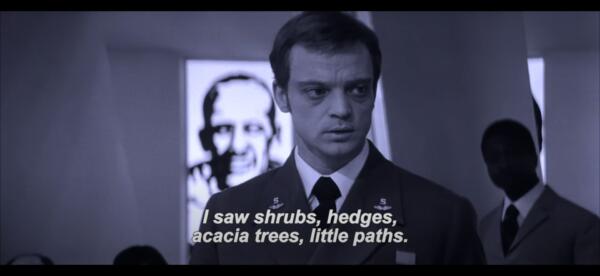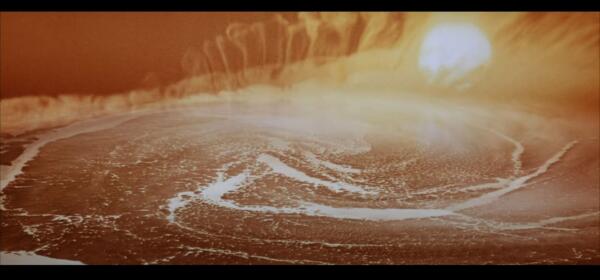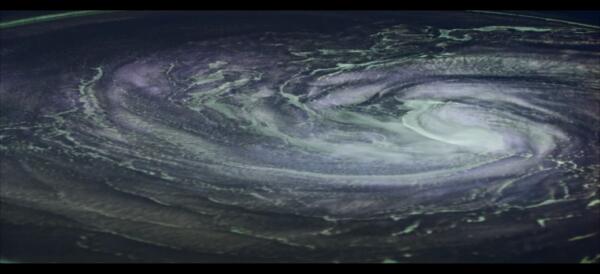
“In Solaris, strange memories are brought into the desperate present. The water world is a beautiful assemblage, constantly shifting shape.”
—Aase Berg, from Tsunami from Solaris
“Assemblages are inherently productive, entering into polyvalent becomings to produce and give expression to previously nonexistent realities, thoughts, bodies, affects, spaces, actions, ideas, and so on.”
—Alexander Weheliye from Habeus Viscus
“consent [is] not so much an act but a non-performative condition or ecological disposition.”
—Fred Moten, from Black and Blur
◈
My charge is to recast the ‘media’ of new media as an interface, a membrane, and a racialized site of violation. I call on the writings of poets, theorists, social scientists and technologists to redefine this word; to unfix its position in technology and communication studies and re-activate both its volatility and potency; to explore the ways the language of so-called “new” media and the virtual spaces they’ve come to occupy might help us describe an emergent yet persistent and politically charged poetics.

Solaris (1972) Directed by Andrei Tarkovsky
To get there you have to see some things about Solaris and its fugitive surface; and about that summer when I started painting again, where it was the novel by Stanislaw Lem I found first before watching Tarkovsky’s film. In Lem’s version someone sends a scientist named Kelvin knifing through space to investigate a research facility; a facility stationed, we are told, on a distant planet called Solaris. On arrival we see that the entire surface of the planet isn’t just covered by but ‘is’ an immense, opaque semi-fluid mass; a black ocean who resists actively the scientists’ attempts to test, touch, or describe it. In other words, no direct communication seems possible.
The book stages its descriptions of the ocean’s surface as a series of scientific reports, something I’ll return to later, but for now what matters most to me is what happens when Solaris, in the human-scaled space we can understand, tries to communicate with the researchers as “visitors”—as simulacra appearing in the station, usually, as near-replicas of loved ones the researchers used to know. For the protagonist, the simulacra appear as his deceased wife, and from her arrival we get the impression that these visitors are acting as intermediaries, or serve as virtual (and material) mediums. But in the diegetic space of this story, who is visiting whom when the deployment of the term “visitor” inoculates, by design, the violence of the scientists’ hostile occupation of Solaris? Their small but indisputably invasive encampment, both in a foreign territory and on the body of the Solarian organism itself (however singular or multiple), shines a light on (and even flexes) the colonial pasts endemic to the genre.

Solaris (1972) Directed by Andrei Tarkovsky
But the violence of this occupation doesn’t just happen on the outside but on the inside. In one wounding scene, the ecological consciousness of the ocean can’t help but appear as a racially charged blip—“a giant Negress,” our protagonist explains, “wearing nothing but a yellow skirt of plaited straw,” resembling the “steatopygous” statues found in “anthropological museums” (Lem, 30). This outlier in the cast of speculative simulacra wears plainly these colonial histories, and appears in the book only once. This moment is completely occluded from Tarkovsky’s adaptation, maybe for the better, but if we are to understand these visitors as mediums through which communication might be possible, as membranes, as interfaces, as surrogate sites where, like communication theorist John Durham Peters suggests, “two interiorities” can meet, then what does this virtual site reveal about the relationship between Solaris and its occupants? I am penetrated by these othering, generically fugitive, highly racialized descriptions because of how porous the Solarian ocean becomes when subjected to the apprehending violence of the gaze; a landscape so soft, so radically vulnerable, Solaris can’t stop itself from mediating that violence. I wonder then how we reconcile this vulnerability with the Solaris who, as a text, texture, and “ecological protagonist” becomes (says scholar Kate Marshall), capacious, rhizomatic and totally resistant to any rhetoric that tries to apprehend it?
◈
“[Radio static is] a fictive copy [of] silence, a reproduction that chafes and fucks-up. It is not authentic. It has margins where worrying things happen.”
–Aase Berg, from Tsunami from Solaris
This interrogation scene, clipped from Andrei Tarkovsky’s adaptation of Solaris, shatters worlds. The instability of the media-event described, both for the military pilot, Burton, and for his critical interlocutors, retains its emotional charge, changed but intact, despite being translated across languages and media. What’s clear about this moment to me, a black queer multimedia artist and poet, is its opacity—the multiple layers of mediation overlaying themselves between us (the ‘you’ and the ‘I’) and the textural surface of Solaris itself. This discursive, intercutting mediation, however—a “plaster-like” surface where, like on Solaris, “everything [is] made of the same substance”—is precisely what constitutes this textured plane.

Solaris (1972) Directed by Andrei Tarkovsky
This topography performs, I argue, a recognizable poetics: a poetics of opacity—a generic instability, a radical refusal—an aesthetic model at once of, but not bound exclusively to, black artistic expression. The writings of Neda Atanasoski and Kalindi Vora, Aase Berg, Simone Browne, Édouard Glissant, Saidiya Hartman, Toni Morisson, and Ed Steck, the work of visual artists Craig Baldwin and Christian Boltansky, and most importantly the films of new media artist Jeron Braxton, provide a grammar with which we might approach this resistant surface—a surface enacting a virtual poetics.
◈
“I maintain dominion over the crevices of myself, deep into the layers of my skin, which must never be questioned. Never doubt that these crevices extend toward an infinitely receding boundary. Come close to me to feel it.”
—Simone White, from Of Being Dispersed

Solaris (1972) Directed by Andrei Tarkovsky
Coming closer we might find that Solaris isn’t a planet at all, but a fugitive surface—a “fictive copy” illegible as a speculative ecological fiction alone. I consider instead that this complex of readings, and maybe Solaris itself, form an assemblage, and a model for black artistic expression—an expression that sees a connection between the treatment of politically marginalized bodies, and of the non-human world; because the ways we ask our technology and our environment to labor, and to mediate the violent apparatuses of the state that pass through them, that use them, is connected to the ways we ask politically marginalized bodies to labor and to mediate, perhaps like Solaris, the violences they are made to be complicit with.
◈
In Surrogate Humanity, theorists Neda Atanasoski and Kalindi Vora draw an important connection between Toni Morrison’s notion of the slave’s position as a surrogate and Saidiya Hartman’s framing of this position as indebted to the abject commodification of the slave’s body. In situating these two notions, Atanasoski and Kalindi set-up the discourse needed to describe what they call the surrogate human effect: a process by which “technology displaces the human-chattel-turned-man with man-made objects that hold the potential to become conscious,” and in turn come to occupy “[a] place [in the] racial order of things in which humanity can be affirmed only through degraded categories created for use, exploitation, dispossession, and capitalist accumulation” (Atanasoski and Vora, 13). While the stakes held by this claim are immense, it’s most important to me to explore both the ways something as cypher-like and weightless as poetry can withstand, impossibly, subjects as heavy as global histories of exploitation, and the ambivalent aesthetic positions that make this possible.
If Toni Morrison claims in Playing in the Dark that the slave population of the antebellum U.S. South was expected to “offer itself up as surrogate selves for mediation on problems of human freedom” (Morrison, 37), the multiplicity of media’s meaning starts to vibrate. Most critically, I’m more interested (as poet Joyelle McSweeney might be) in the literal interpretation of this mediation, as a process of becoming media, opening-up the discourse Morrison attempts to concretize. By reading surrogacy as a process of mediation, and the body itself as a medium—becoming both a legible surface, and a complicated discursive and physical site of interactivity—how does this disrupt or distort the social and legal coding of enslaved peoples as fungible commodities?
According to Saidiya Hartman, in Scenes of Subjection, when it comes to a slave’s body, forced to act both as human subject and commodity fetish, discourses surrounding freedom are not the only things capable of being mediated. “The fungibility of the commodity,” says Hartman, “makes the captive body an abstract and empty vessel vulnerable to the projection of others’ feelings, ideas, desires, and values; and, as property, the dispossessed body of the enslaved [becomes],” in this system, “the surrogate for the master’s body” since the dispossessed are made to ‘act’, says Hartman, “as the sign of [the master’s] power and dominion.” The surrogate becomes, in other words, an “augmentation of the master subject” (Hartman, 21). Using this model for both the slave and for the commodity, as ‘vessels’ “vulnerable to the projection of [others],” we can begin to draw a connection between the dispossession a slave’s body undertakes, and the conditions of the art-object, and it is not coincidental, I think, that Hartman’s language starts to cross lexical boundaries—from economic to aesthetic, from political to technical.

Solaris (1972) Directed by Andrei Tarkovsky
Through this process of augmentation Hartman describes, “the materiality of suffering regularly eludes (re)cognition” as the suffering body is continually “replaced by other signs of value [and indeed] by other bodies” (Hartman, 21). By letting our contemporary understanding of augmentation and augmented reality technologies flow backwards to flood Hartman’s text, the racialized systems of power and ownership recast the hierarchical relationship between our digital and material lives. A relationship Art can reveal to be unstable and multiple. This sign substitution simulates on the slave’s body, then, not an “imaginative surface,” but a virtual one: an abject interface which is as physical and permeable as it is ephemeral and indeterminate (Hartman, 6). Our purpose here is to think deeply about the ways art-objects can occupy this surface. What are the poetics new media technology makes possible, and how does new media’s complicity with processes of racialization both change and charge, for artists and writers, the politics of choosing to work with these technologies?
Madison McCartha is a black, queer multimedia artist and poet whose work appears or is forthcoming in Black Warrior Review, Denver Quarterly, The Fanzine, jubilat, Prelude, Tarpaulin Sky, and elsewhere. Their debut book-length poem, FREAKOPHONE WORLD, is forthcoming from Inside the Castle in 2021. Madison holds an MFA from the University of Notre Dame and is a PhD student at UC Santa Cruz. @MadisonMccartha